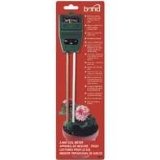
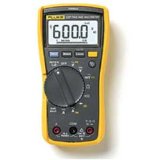

Search This Site
Search With Google
Chilli Plant Moisture Meter
Thirsty Light Garden Moisture Meters
Sometimes when you go out shopping you just happen to come across something that really appeals due to its simplicity and novelty Coloured moisture meters
Moisture Meter Guide
The complete moisture meter website
The chilli pepper is the fruit from the chilli plant belonging to the genus capsium. Their heat comes from several related chemicals which are collectively called capsaicinoids. Originally chillis originated in the Americas, but as they became more widely used in cooking and medicine, cultivating chillis spread around the world. India is the worlds largest producer, consumer and exporter of chillis these days.
Moisture Meter Guide 2010 Contact details:garnett65@hotmail.com
The Orchid Moisture Meter
The orchid belongs to a widespread and very diverse family of flowering plants which have fragrant and colourful blooms. Orchids can be found in pretty much every habitat. Successful orchid growing
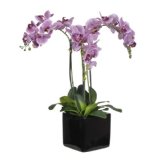
Firewood Moisture Meter
The Stihl moisture meter can be used to detect and give a moisture reading level in firewood. This is important if you have a log burning fire or stove. It is essential that you only burn well seasoned wood. As well as being able to detect the moisture levels in firewood the Stihl moisture meter can be used on both paper and cardboard as well.
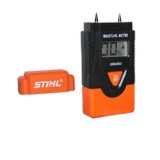
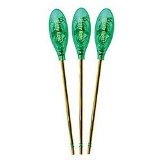
Hydroponic Moisture Meter
Hydroponics is a way of growing plants in water, using mineral nutrient solutions and no soil. Terrestrial plants can be grown using such mediums as gravel, mineral wool, expanded clay and rock wool. Hydroponic growing
Lawn Roller
In the quest for the perfect lawn the gardener requires certain gardening tools to assist him or her. Garden lawn rollers
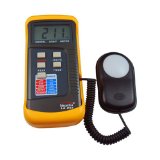
Petrol Strimmer
So if you are in the market for buying a petrol strimmer you can either sit in the comfort of your own home and browse the internet until you find what you are looking for Garden strimmers
Lawn Scarifier
When choosing from the vast array of lawn scarifiers available to you, the size of your lawn and the budget available to you to invest will be deciding factors. Garden scarifiers
Petrol Chainsaw
The petrol chainsaw is a mechanical hand held saw. It can be powered by either petrol or diesel. Garden chainsaws

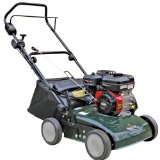

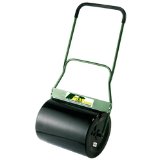
There are 5 domesticated species of chilli pepper which are;
Capsicum annuum -
Capsicum frutescens -
Capsicum chinense -
Capsicum pubescens -
Capsicum baccatum -
The heat of chilli peppers is measured in Scotville heat units where a measurement of chilli extract is added to sugar syrup and then the heat becomes detectable when tasted. The stronger the chilli, the higher the rating it has.
When eaten the capsaicinoids in the chilli hit the pain receptors in the mouth and throat. Once alerted to the chilli theses receptors alert the brain, which in turn heats up as a response and then the heart rate will increase and perspiration takes place. Endorphins are then released throughout the body.
Rapitest Chilli Plant Moisture And Light Meter
When growing chilli plants the moisture content levels in the soil are of great importance regarding the health of your plant. All plants require light, but the chilli plant does require an awful lot of continuous light for it to flourish. You can purchase yourself a garden moisture meter to test the soil moisture content levels, but it is a better option for you to purchase a combined meter that can test for both moisture levels and light levels that your chilli plant receives. One of our favourite moisture meters in this category is the Rapitest 1830 moisture and light combo meter.
This moisture meter has an analogue display which displays the results it obtains on a graduated scale. For ease of use the testing probe is attached to the meter with a flexible cord to allow you to carry out tests in the most awkward of places and there are no batteries required to operate it.
To test for the amount of light that your chilli plant receives you must first select the light testing option on the meter. On top of the meter case you will see a window which monitors light sources. You need to aim this window towards the light source of you plant, without obstructing it in any way with shadows etc. You will receive a light reading result and you should make a note of it. To gain maximum accuracy it is a good idea to take 2 more readings and then work out an average reading. You will notice that the light source results come on a scale of A to H. A is the lowest light source with H being the highest. You must check the information booklet to get the recommended light source level reading for your chilli plant and then compare your results with it. If you need to relocate your chilli plant , then do so.
Testing for soil moisture content levels could not be any simpler than with this garden moisture meter. Simply insert the testing probe in to the soil and wait a few moments until a result is achieved. Again it is advised that you take a couple of readings and work off the average of the readings you have taken. Check the supplied handbook and compare your readings with the recommended moisture levels required for your particular plant.
Growing Chilli Peppers
Although growing chilli plants has been long associated with warmer climes, they can be grown successfully in the Northern Hemisphere. In order to get yourself a good harvest your plants have to be started indoors. The ideal plan for growing the chilli plant is to plant seeds at the beginning of the year and take good care of the seedlings indoors or under glass until it is time to put them outside when the threat of frost has disappeared.
You germinate chilli seeds in the same way as any other seed. A good tip to help the seeds along is to place them between sheets of damp kitchen roll and keep them in a sealed freezer bag. The sealed freezer bag then has to be kept somewhere warm like your airing cupboard. Here moisture and heat will remain around the seeds and speed up the germination process. After a couple of days the seeds should of swelled in size, with some even beginning to sprout, and be ready to plant in a container.
When you plant chilli seeds you want to space them properly with a gap of about 5
cm in a multi purpose compost. Cover the seeds with about half a cm of compost and
spray lightly to moisture them. You want to stop the compost from drying out so check
them every day and spray lightly if water is required. You can monitor the moisture
levels of the compost using a garden moisture meter. Your seeds require heat and
moisture at this time of their life. The heat requirement should be around 23 -
After germination and your seedlings show above the soil there is another requirement they require and that is light. The correct lighting is necessary and one problem here can be that your chilli plants will climb up to the light source and become tall and spindly. Articficial lights, grow lights, can be used but they will be expensive and require much maintenance. A cheaper alternative is to use a basic fluorescent tube light from any adequate DIY store. Set these up above your chilli plants and do monitor them though, because they can scold your plants if located too near.
Chili plants can be potted after they have had their second set of leaves. The type of pot is not important and just keep them on your window sill or under artificial lighting. After a couple of weeks you will probably need to repot the plants again in larger pots. Once any risk of frost has disappeared you can put your chilli plants outside.
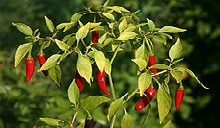
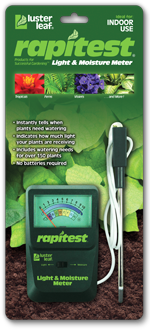
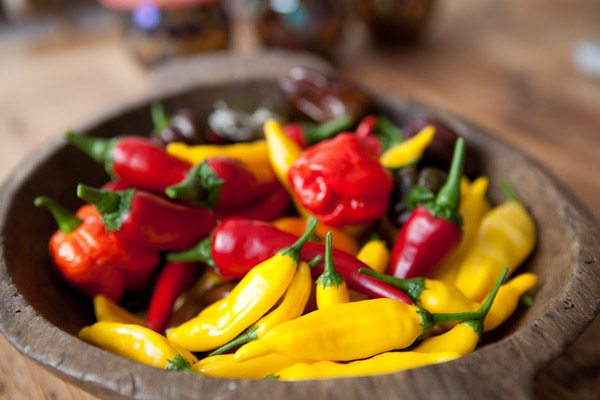
| Tramex Moisture Encounter Plus |
| Tramex Compact Wood Moisture Meter |
| Tramex Concrete Encounter Moisture Meter |
| Tramex Skipper Plus Moisture Meter |
| Tramex Roof And Wall Moisture Scanner |
| Sonin Digital Moisture Meter model 50218 |
| Sonin Digital Moisture Meter 270 model 50270 |
| Sonin Moisture Test Tool model 50210 |
| Sonin Moisture Test Meter Model 50211 |
| Oak |
| Douglas Fir |
| Beech Tree |
| Elm Tree |
| Hickory Tree |
| Maple Tree |
| Pine Tree |
| Prevent And Repair Gaps In Wooden Floorboards |
| How To Fix A Squeaky Hardwood Floor |
| How To Repair A Hardwood Floor That Has Buckled |
| Which Is The Best Firewood? |
| Concrete |
| Concrete Moisture |
| Screed Moisture Meter |
| SDS Drill |
| Belle Cement Mixer |
| SDS Drill Advice |
| Which SDS Drill |
| SDS Drill Accessories |
| Drilling Into Concrete |
| Kennedy Tool Box |
| Moisture - Basic Facts |
| Types Of Damp |
| Wet Rot |
| Dry Rot |
| Mold |
| Water Leak Detection |
| Stucco Moisture |
| Water Damage |
| Moisture And Rust |
| Moisture Damage To A Chimney |
| Wallpaper Stripper |
| Plaster Mixer |
| Why Worry About Moisture Problems |
| Does Your Home Have A Moisture Problem? |
| How To Solve Moisture Problems |
| How To Use Anti Mold Paint |
| Rising Damp |
| Condensation |
| Salt Damp |
| How To Avoid Bathroom Condensation |
| How To Remove Black Mold |
| How To Prevent Bathroom Mold |
| Soldering Kit |
| Soldering Kit Contents |
| Soldering Kit Advice |
| Bonsai Tree Classification |
| Growing Bonsai From Seed |
| Bonsai Tree Care |
| Bonsai Tree Training |
| Bonsai Tools |
| Displaying Bonsai |
| Bonsai Calendar |
| Bonsai Plants |
| The Thirsty Light Curve Moisture Meter |
| The Thirsty Light Ladybird Moisture Meter |
| The Thirsty Light Bumble Bee Moisture Meter |
| The Thirsty Light Butterfly Moisture Meter |
| Hanna Instruments |
| Agratronix Portable Coffee Moisture Tester |
| Lawn Aerator |
| Lawn Roller |
| Lawn Rake |
| Lawn Sand |
| Chainshot |
| Chainsaw Gloves |
| Chainsaw Trousers |
| Chainsaw Boots |
| Mac 4 - 20 XT Chainsaw |
| Mac 738 Chainsaw |
| Mac 842 Chainsaw |
| Mac 20X Power Chainsaw |
| Einhell BG-PC 3735 Chainsaw |
| Einhell BG-PC 4040 Chainsaw |
| Einhell BG-PC 5045 Chainsaw |
| Poulan P3314 Chainsaw |
| Poulan P4018 Chainsaw |
| Poulan Pro PP3816AV Chainsaw |
| Poulan Pro PP4218AVX Chainsaw |
| Poulan Pro PP4620AVX Chainsaw |
| Efco MT 4100 SP Chainsaw |
| Efco MT 3500 Chainsaw |
| Efco 132 S Chainsaw |
| Efco 147 Chainsaw |
| Efco 152 Chainsaw |
| Efco MT 7200 Chainsaw |
| Efco MT 8200 Chainsaw |
| Efco MT 3750 Chainsaw |
| Methods Of Obtaining Soil Moisture Levels |
| Hygrometer |
| Psychrometer |
| Rain Gauge |
| Wave Ventilation System |
| Humidity |
| Hygrometer For Keeping Reptiles |
| Humidor |
| Weather Stations |
| Musical Instrument Storage |